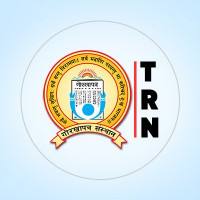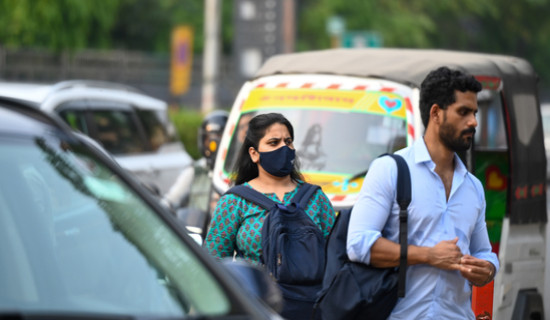- Friday, 6 June 2025
How And Why Planes Crash
Plane accidents are without a doubt the most disastrous events that may occur in the aviation sector. How and why do they occur?
Plane crashes are nearly never caused by a single defect, but by a combination of several. Pilot mistake, mechanical failure, sabotage (or purposeful crashes), difficulties with ATC or ground employees, and unexplained reasons are the most prevalent causes of plane crashes.
A plane accident, whether it's a tiny personal aircraft, a commercial/passenger jet, or a military aircraft, is disastrous. Unfortunately, most accidents end in the death of the crew and passengers, as well as the loss of possibly millions of dollars in equipment and the plane itself. Knowing how and why planes crash is essential so that pilots know what to look for and pay attention to. This post will teach you about the six most typical reasons for plane crashes.
Why Do Planes Crash?
Let me reassure you about what you're going to read. Flying is actually quite safe. According to 2018 sources and data, there is less than one fatal plane disaster for every 2.5 million trips globally. As you can see, it's really unusual. You are significantly more likely to be involved in an accident on your daily drive to work or school than you are when flying.
However, this does not mean that planes never crash. Even though it is extremely rare, one out of every 2.5 million flights, or thereabouts, ends in tragedy. Given how safe flying is and how much may go wrong for a plane to crash, it's a fascinating issue to investigate what causes the disasters after all.
The truth is that the great majority of aviation disasters cannot be ascribed to a single cause. For example, if a component on a plane breaks, there are nearly always protections or redundancy in place to keep the plane from collapsing. When a plane crashes, there are frequently a number of difficulties that contribute to the end tragedy.
If you're looking for a new way to spend your time, here is the place to be.
One of the reasons that aviation disasters are so difficult to prevent is because they are so unpredictable. In most situations, the crash is sudden and appears to come from nowhere. This is due to the fact that a plane might crash at any time throughout the journey. A plane can crash at any time throughout the flight, from takeoff to landing, due to one of the numerous difficulties detailed below.
Having said that, the most likely time for a plane accident is during the final approach and landing. According to a Boeing research on all plane disasters from 2005 to 2014, nearly four out of every ten (38%) aviation crashes occur during approach and landing. The cruise is the second most usual time for a crash (27%), followed by the descent (17%), take-off (13%), and finally, the climb (8%).
Six Causes
Pilot’s Errors
Pilot mistake is by far the most prevalent cause of aviation crashes worldwide (it accounts for more than half of all crashes). While we all hold pilots in high respect — and rightly so! — at the end of the day, they are just humans. And, as much as we may dislike admitting it, we all make errors as humans. Pilots are included.
The problem is that when pilots make a mistake, the results may be disastrous. Of course, many pilots would like to blame the aircraft or some other external issue, but the truth is that aeroplanes are getting increasingly technologically advanced on a daily basis. Yes, this implies that there is more room for the systems to fail and cause a disaster, but it also means that the planes are considerably safer overall.

So, when anything goes wrong, pilot mistake is more likely than plane fault. This might involve the pilot making the incorrect judgement to perform something that is required, or failing to act when they should. These sorts of errors are frequently accompanied by weariness among pilots and crew, which is why pilots are limited to 1,000 flying hours each year.
When pilots and crew are tired, their performance suffers and they may be less sharp and fast to respond to anything that goes wrong. As planes become more smart, they provide pilots with more warnings of possible mistakes and problems than ever before. However, it is still up to the pilots to process all of the information and determine what to do. Almost always, everything goes smoothly.
However, if a pilot makes a mistake, it might set off a chain reaction of trying to repair the error, making further mistakes, and so on. This is why pilot mistake can be so destructive, and why it is by far the main cause of aviation disasters.
Mechanical Failures
You could be thinking after reading the last part that it's always the pilot's responsibility and that they need to perform a better job. However, this is not always the case, as pilots perform admirably 99.999% of the time! A pilot may do everything correctly on their end, but the plane may still crash. Mechanical failure, or something on the plane's side of things failing, is the second most prevalent cause of aviation crashes.
With each year's developments in technology aboard airplanes, there are more potential areas of failure. This increase in failure points is always offset by the benefits of improvements and new systems, or they would never be put in the first place. But, no matter how secure it is, everything has the potential to fail.
This problem is exacerbated when pilot mistake (typically due to weariness) exacerbates a mechanical breakdown. Something may go wrong with the plane, but the pilot should be able to handle it most of the time. If they do not respond appropriately, the repercussions might be severe.
Weather Conditions
Bad weather is one of the potential reasons of plane failures that has been greatly reduced in contemporary times. Weather was undoubtedly the toughest thing for pilots to cope with in the early days of flight. Whether it was lightning, thunderstorms, heavy rain, limited visibility, gusts, or turbulence, planes of the past would struggle to make it through bad weather.
Modern airplanes, on the other hand, can manage weather far better. Rain and limited visibility don't really matter as much now because computer systems and things like autopilot have automated much of the flying process. That is not to suggest that weather never causes a plane disaster, but it is significantly less likely.
Weather now mostly impacts smaller aircraft, such as a single-engine plane that you may be flying or own. These smaller planes are more vulnerable to high winds and turbulence, and rain and visibility concerns can make flying difficult for the pilot.
Sabotage
Now we'll take a short look at the negative aspects of the situation. Sabotage or purposeful accidents are major causes of aeroplane crashes all over the world. As you might expect, this includes bombs or explosives, terrorist attacks and/or hijacking (think 9/11), and even the rare and sad situation in which a suicidal pilot decides to end their own life as well as the lives of the crew and passengers.
While these sorts of mishaps are extremely infrequent in general, bombs and explosives are the most typical types of sabotage that cause planes to crash. This is, of course, extremely unusual, but it is far more common than a hijacking or a suicide pilot. However, they are all as terrifying.
This is one of the reasons why the Transportation Security Administration (TSA) conducts such comprehensive security inspections at airports. The TSA searches all staff and passengers for anything that may be used as a weapon or bomb aboard the plane. This is also why the liquid limit, for example, is 3.4 fluid ounces.
Sabotage is a terrifying phenomenon that, sadly, causes planes to crash on occasion.
Errors in ATC or Ground Handling
While pilot mistake is the most prevalent cause of plane disasters, bear in mind that they are not the only humans engaged in any particular flight. Aside from the pilot, air traffic controllers are the most critical personnel in ensuring a safe flight. Air traffic controllers keep pilots clear of other flights, tell them when and where to land, and manage all traffic on the runways/taxiways/at the terminals.
And, just as pilots can make mistakes due to exhaustion or attention, air traffic controllers can make mistakes as well. And if an air traffic controller makes a mistake in coordinating with other planes, the potential implications can be disastrous, frequently leading in a multi-plane accident.
Ground staff such as maintenance, loaders, and dispatchers can potentially cause problems. These personnel, like pilots and air traffic controllers, are human and may make mistakes. If maintenance employees make a mistake, such as failing to notice a possible fatigue crack, it might lead to a mechanical breakdown later on. Despite the fact that it began with a human error.
Or similar to how an air traffic controller might unwittingly trigger an accident with many planes, so could ground staff. There are several potential for failure among the operators of the super tugs (the trucks that pull planes around the gates), the loaders of luggage into the luggage compartment, and the employees directing the aircraft to and from the gate.
Other/Unknown
The five most prevalent causes of plane crashes worldwide, accounting for well over 90% of all crashes, are listed above. The last group of reasons contains everything else that isn't included in the previous categories, such as runway difficulties that cause a crash during landing or take-off.
Finally, there are plane crashes when the cause of the crash is uncertain. While investigations are quite comprehensive and frequently lead to the discovery of what caused the catastrophe, they are not without flaws. Some accidents are never solved, and the reason(s) for the plane's demise remain a mystery for the rest of time.
The installation of black boxes — nearly indestructible boxes containing critical flight recording software and data — has significantly reduced the number of unsolved airline disasters. The worrisome part is that it is not the first time this has happened. As technology progresses, we will most likely be able to find out even more accidents while experiencing fewer of them to begin with.
The Swiss Cheese Model
The "Swiss Cheese Model" is a famous term for the hypothesis that a plane nearly never crashes for any of the causes listed above on their own. Almost all crashes are caused by a mixture of a few discrete faults that, when combined, create enough problems that a crash is unavoidable.
Consider each possible issue or difficulty to be a piece of Swiss cheese. You probably wouldn't be able to see through a group of Swiss cheese slices stacked up against each other. The perforations would be misaligned, obstructing your eyesight. The Swiss Cheese Model predicts that on sometimes, the holes in the Swiss cheese may line up with each other – but exceedingly seldom.
During these moments that the holes of the Swiss cheese lined, you'd be able to observe holes across the entire area of cheese. This is similar to how an aircraft disaster may happen - when enough problems collide and cause the plane to collapse. A plane crash is an extremely unusual occurrence that requires numerous faults to line up like holes in Swiss cheese.
This is why it is so difficult to pinpoint the reason of an aircraft crash, as it is nearly never entirely attributable to one factor or another. A pilot, for example, may be weary and the weather may be terrible. Those two might be OK on their own, but suppose the plane also experiences a mechanical issue.
Now you'll have a weary pilot attempting to account for and correct for the technical problem while also contending with adverse weather and their own exhaustion. Perhaps the pilot is so weary and focused on dealing with the weather that they fail to notice the sirens indicating a mechanical malfunction. In each situation, the plane accident is caused by a combination of at least three faults. As a result, the Swiss Cheese Model was born.
(Courtesy of SkyTough)




-square-thumb.jpg)





-original-thumb.jpg)



-original-thumb.jpg)
